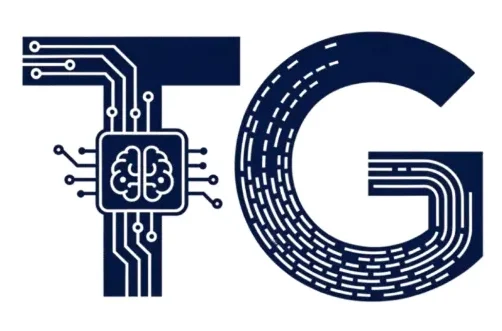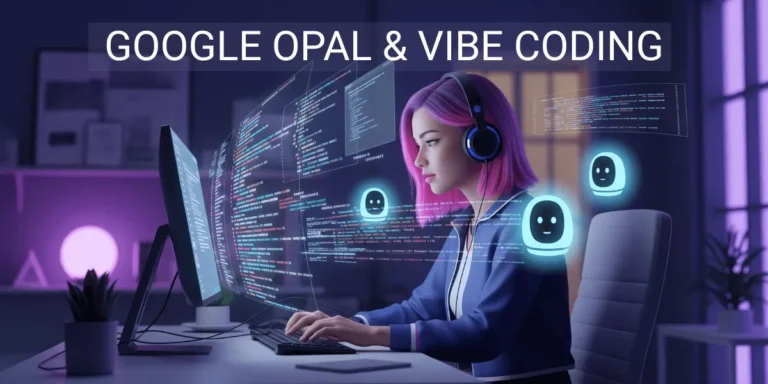In a world full of distractions, Google is quietly preparing to launch something that could reshape how developers work. Opal, a new coding experience focused on what it calls “vibe coding.” It is not just about writing code anymore, it’s about how you feel while doing it.
This blog dives into what Google Opal is, how vibe coding works, and why it matters to developers in 2025 and beyond.
Table of Contents
🔍 What Is Google Opal?
Google Opal is a next generation coding tool that blends AI assisted development with flow-enhancing design elements like ambient lighting, minimalist UI, and music. As per Google I/O 2024, Opal is not just another IDE, it is a coding experience.
Think of it as part GitHub Copilot, part Notion for developers, and part calming Zen workspace.
🧠 What Is Vibe Coding?
“Vibe coding” is Google’s term for a focused, immersive, and emotionally aware way of programming.
Here’s how it works:
| Element | How It Helps You Code |
|---|---|
| 🎧 Ambient sounds | Block out distractions and enhance mood. |
| 🎨 Visual cues | Subtle background changes to indicate code context, progress, or errors. |
| 🧘 Flow state triggers | AI learns your habits and adjusts UI/UX accordingly. |
| 🤖 AI pair programmer | Suggests code, fixes bugs, and adapts to your coding style. |
Rather than pushing productivity alone, Opal prioritizes the developer’s mental state. That is a trend which reflects growing awareness of burnout and deep work in tech.
👥 Who Is Google Opal For?
Whether you are a night owl coder or a caffeine fueled product engineer, Opal is designed for:
- Frontend and web developers wanting real time design + code synergy.
- Freelancers seeking a peaceful, focused environment.
- Students who benefit from guided AI feedback.
- Remote teams needing collaborative, distraction-minimized tools.
- Neurodivergent coders who want sensory-adaptable environments.
🛠️ How Does It Work?
Opal is expected to work within Google Project IDX or as a standalone web based IDE. Here’s what it’s expected to include:
- Cloud based coding with minimal setup.
- AI powered code generation and refactoring.
- Customizable themes, ambient soundtracks, and workspace lighting.
- Google Cloud integration for backend deployment, Firebase support, etc.
- Privacy focused architecture with secure local session isolation.
You won’t need to install anything bulky. Just sign in with your Google account and launch your cloud workspace.
🗓️ When and Where Is It Launching?
While Google has not revealed an official launch date, Opal is currently in closed development. Based on demos shown during Google I/O 2024, we expect:
- Beta launch in late 2025
- Initial rollout via Project IDX or Firebase for developers
- Global availability through the Google Cloud developer portal
🤔 Why Does It Matter?
We have built better AI, faster processors, and more powerful software. But one thing remains hard that is deep focus. Google Opal thinks about something that most dev tools ignore that is ‘how we feel when we work’.
Vibe coding could become the norm in a world filled with Remote work fatigue, Constant notifications, Mental overload from complex stacks.
Opal may redefine developer productivity not in lines of code, but in hours of focus.
🎯 Final Thoughts
Whether Google Opal becomes the new standard or a niche experiment, one thing is clear that is Google is betting big on developer wellness meets AI. And vibe coding might just be the beginning.
So the next time you sit down to code, ask yourself not just what you are building but how you feel while building it.
FAQ
Is Google Opal available outside the US?
No, Google Opal is currently in a US only public beta, launched on July 24, 2025. No global release date has been announced.
What kind of apps can I create with Google Opal?
You can create mini web apps like task managers, marketing tools, or simple prototypes. Opal uses AI to generate apps based on your natural language prompts.
How do I start using Google Opal?
Sign into opal.withgoogle.com with a Google account and select “Create New” or a demo gallery template. Use prompts or the visual editor to build your app.
Can I share apps made with Google Opal?
Yes, you can publish your app and share it via a URL. Others with Google accounts in the US can access and use it.
You might be interested in following article
NotebookLM: Google’s Smart Research Assistant That Understands Your Notes

